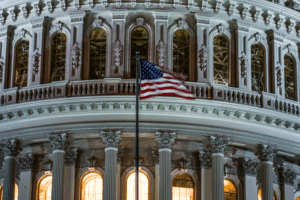
US MUNI Primer: Reviewing Characteristics of the US Municipal Bond Market
Pat Luby - Head of Municipal Strategy, CreditSights
Wilson Lees - Analyst, Municipals, CreditSights
1 October 2025
- A clear overview of the U.S. municipal bond market’s size, diversity, and role within fixed income.
- An explanation of how munis work, who issues them, and the differences between general obligation and revenue bonds.
- Insight into key investor benefits, including tax-advantaged income, diversification, and historical credit performance.
- A balanced view of risks, such as interest rate sensitivity, issuer credit pressures, pensions, and liquidity considerations.
- Understanding of why munis matter for investors and communities, financing essential public services and infrastructure.
The U.S. municipal bond market is a large and diverse segment of the fixed income universe, with approximately $4.2 trillion in bonds outstanding, with roughly one million CUSIPs from about 60,000 distinct issuers. Public entities account for approximately 80% of the municipal market, with the other 20% made up of bonds issued for not-for-profit organizations (such as hospitals, private universities and museums) and Private Activity Bonds (or PABs). Public issuers include state and local governments, their political subdivisions (such as cities and counties), and various instrumentalities—school boards, water and sewer authorities, public colleges and universities, among others. Municipal bonds that benefit private business or provide private loan financing may be designated as Private Activity Bonds. PABs which meet certain requirements are qualified Private Activity Bonds. Interest earned on qualified PABs is exempt from federal income taxes, although interest from bonds that benefit private businesses (such as airport revenue bonds) or private individuals (such as student loan revenue bonds) may be subject to the Alternative Minimum Tax (AMT). The income earned on most municipal bonds is generally exempt from federal income taxes. Most states also exempt income from in-state bonds from local taxation. For example, a New York City resident investing in New York City bonds would benefit from exemptions at the city, state, and federal levels. This local tax exemption incentivizes investors to accept lower yields on double- or triple-exempt bonds. In states without local income taxes, such as Texas and Florida, municipal bonds typically trade at higher yields, as investors in those states do not have an incentive to favor local bonds.



